Many cars today are just giant, expensive, hyped-up gadgets. So it makes perfect sense to test a few of the latest and most advanced vehicles and report back on the latest automotive tech. Our first subject is the Ford Mustang Mach-E, and boy is there a lot to talk about here.
The Ford Mustang Mach-E is an all-electric vehicle, presenting a lot of range. It can travel between 211 and 305 miles or 340 to 490 kilometers on a single charge. It can comfortably seat four people. It seems like a mashup of a sedan, hatchback, and crossover. Maybe, four-door liftback describes it well enough. In terms of size and price, you could call the Tesla Model 3, Tesla Model Y, Volkswagen ID.4, and maybe even the Polestar 2 a rival for this Ford.
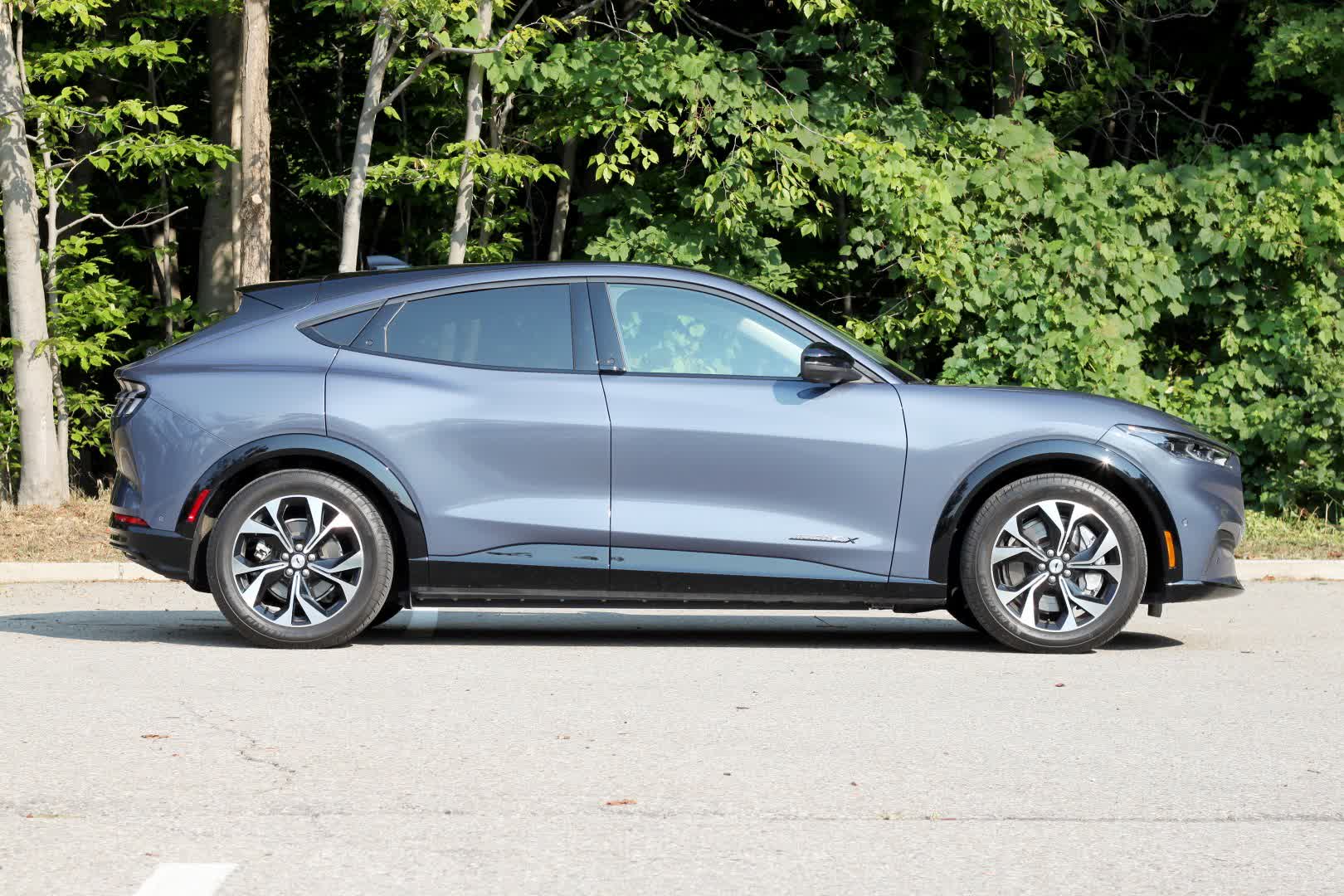
Back in 2019, when Ford revealed that its new, practical, electric vehicle would be called a Mustang, there were many griping the use of the name online. Two years later as the Mach-E hits more and more dealers, the grumbling has become a bit more muted, as the Mach-E proved to be plenty fast and enjoyable, not to mention relatively attainable.
Is it a real Mustang? Does it matter? People have been asking “what’s in a name?” since the 1600s, so it’s unlikely to change anytime soon. Whether communities like the name or not, it has a starting price of $42,895 in the US and a fully loaded price under $70,000. For comparison, the similar Tesla Model Y starts at about $46,990 in the US, while the VW ID.4 starts at $41,190.
Specs & models: What should I know?
The wide range of pricing is due to all the various configurations of the Mustang Mach-E. Shoppers can choose from two battery sizes: a standard 66 kWh and an extended range model with 88 kWh.
Shoppers also have a choice of driven wheels and power output. Rear-wheel-drive models with the standard battery feature 266 horsepower and 317 lb-ft of torque, while RWD models with the extended battery feature 290 horsepower and 317 lb-ft of torque.
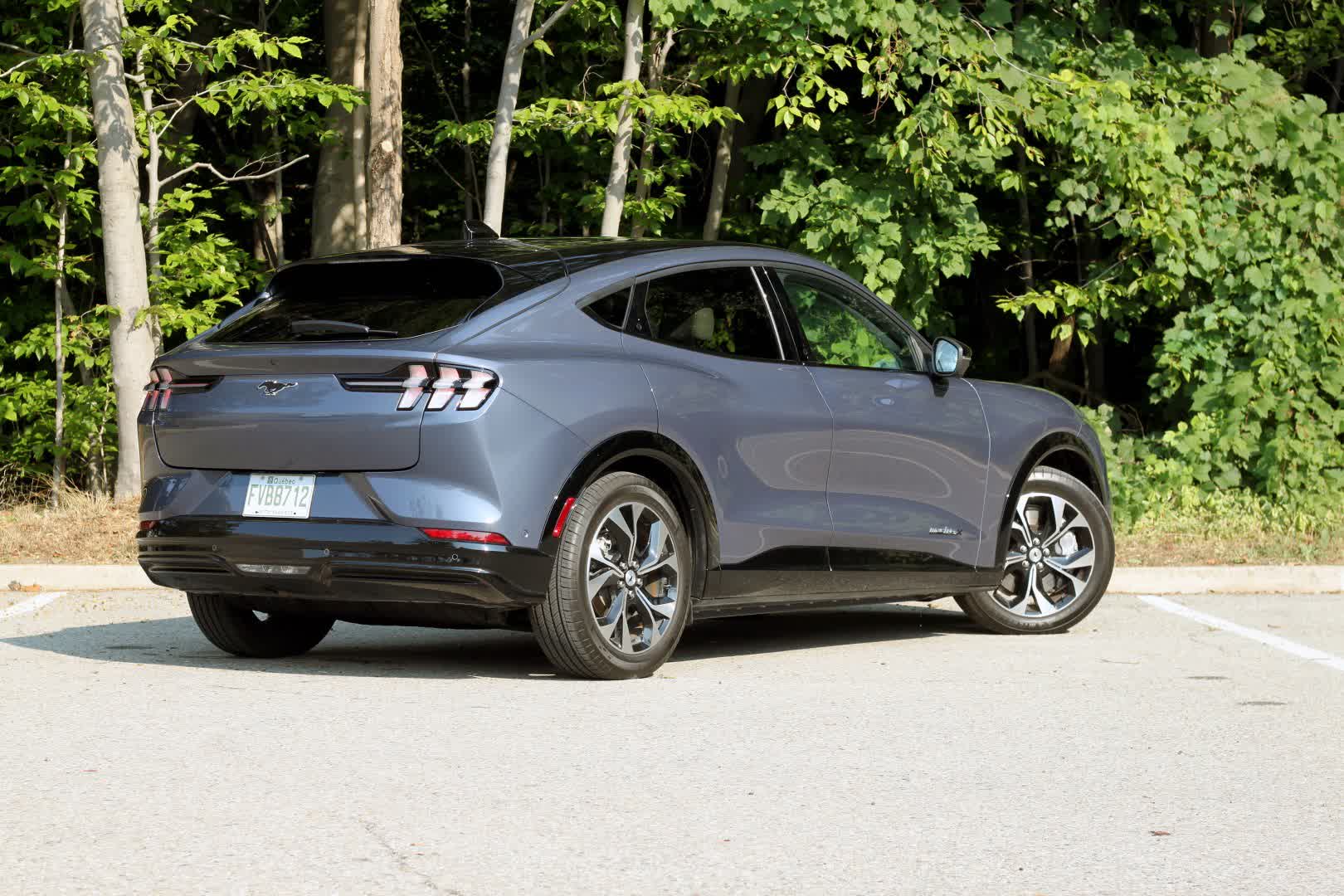
Want more grip or confidence in poor weather? Then you can get an all-wheel-drive model. These units with the standard battery put out 266 horsepower and 428 lb-ft of torque, while AWD models with the extended battery pack 346 horsepower and 428 lb-ft of torque.
Think those figures are a bit wimpy? Then check out the high-performance GT model, which includes the extended range battery and all-wheel-drive, but delivers more power and torque to the tune of 480 horsepower and 600 lb-ft of torque, while Performance Editions get an extra 34 lb-ft of torque.
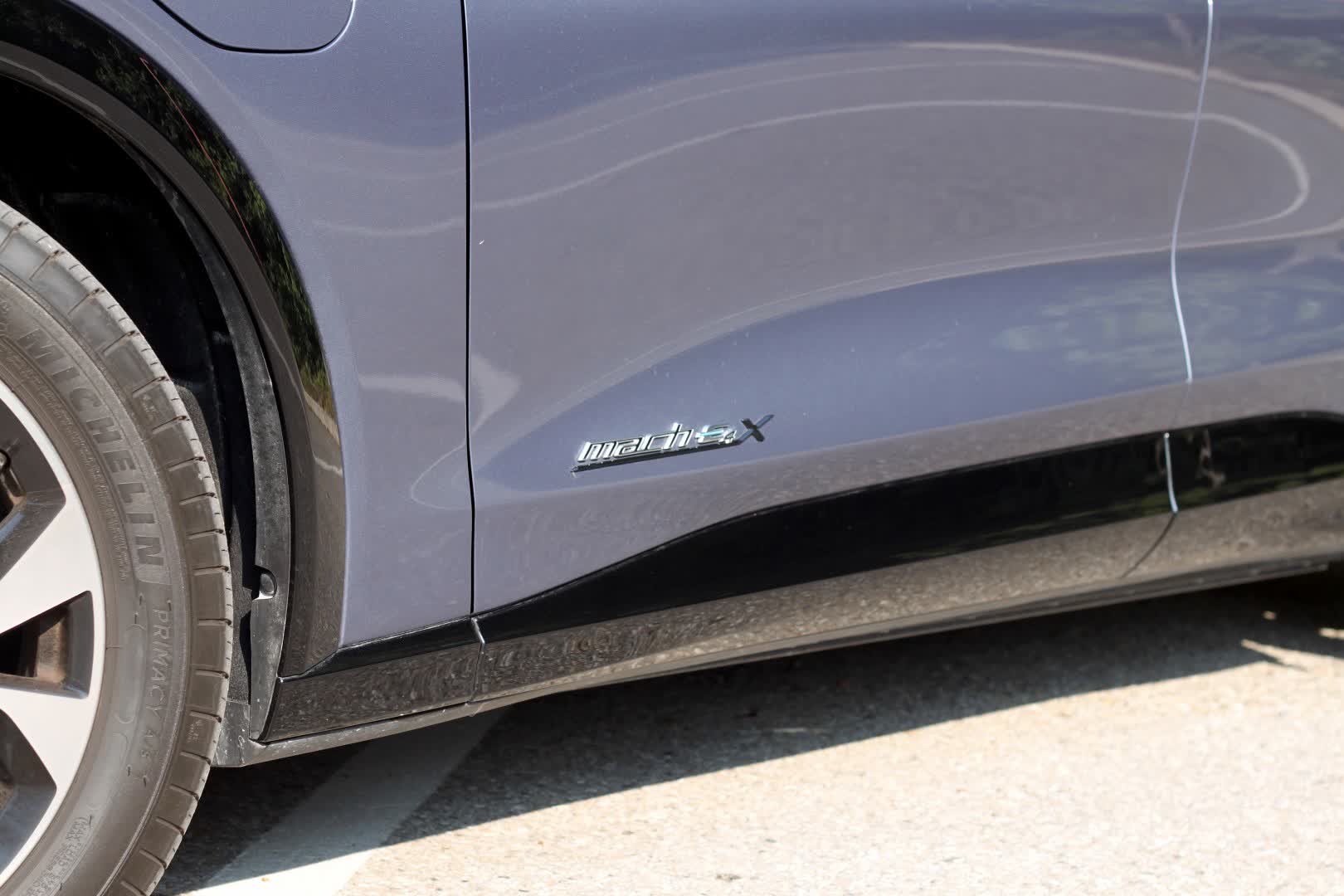
The model we had on hand sat right in the middle of all of those configurations: it has all-wheel-drive and an extended range battery. This setup is rated by the EPA to return 270 miles, or about 435 kilometers, on a single charge. However, outside of the EPA labs, the range can fluctuate quite a bit.
Things like exterior temperature, cabin climate, speed, and even the accessories used in the vehicle can impact range. There were moments when the estimated range of a full battery was within ten percent more or less of the EPA figures.
What’s it like to drive?
Laying into the throttle doesn’t help the battery stay full for long, but it is incredibly satisfying.
While 346 horsepower and 428 lb-ft of torque output in this mid-range model seem pedestrian these days, the vehicle instantly accelerates without lag or hesitation. The sprint from 0-60 MPH takes just 4.8 seconds, almost the same as a V8-equipped Mustang GT.
The silent sprint is a hoot and will draw out giggles and smiles from you and your passengers.
The silent sprint is a hoot and will draw out giggles and smiles from you and your passengers. Ford might want to add more padding to the headrests if they plan on improving upon this kind of acceleration.
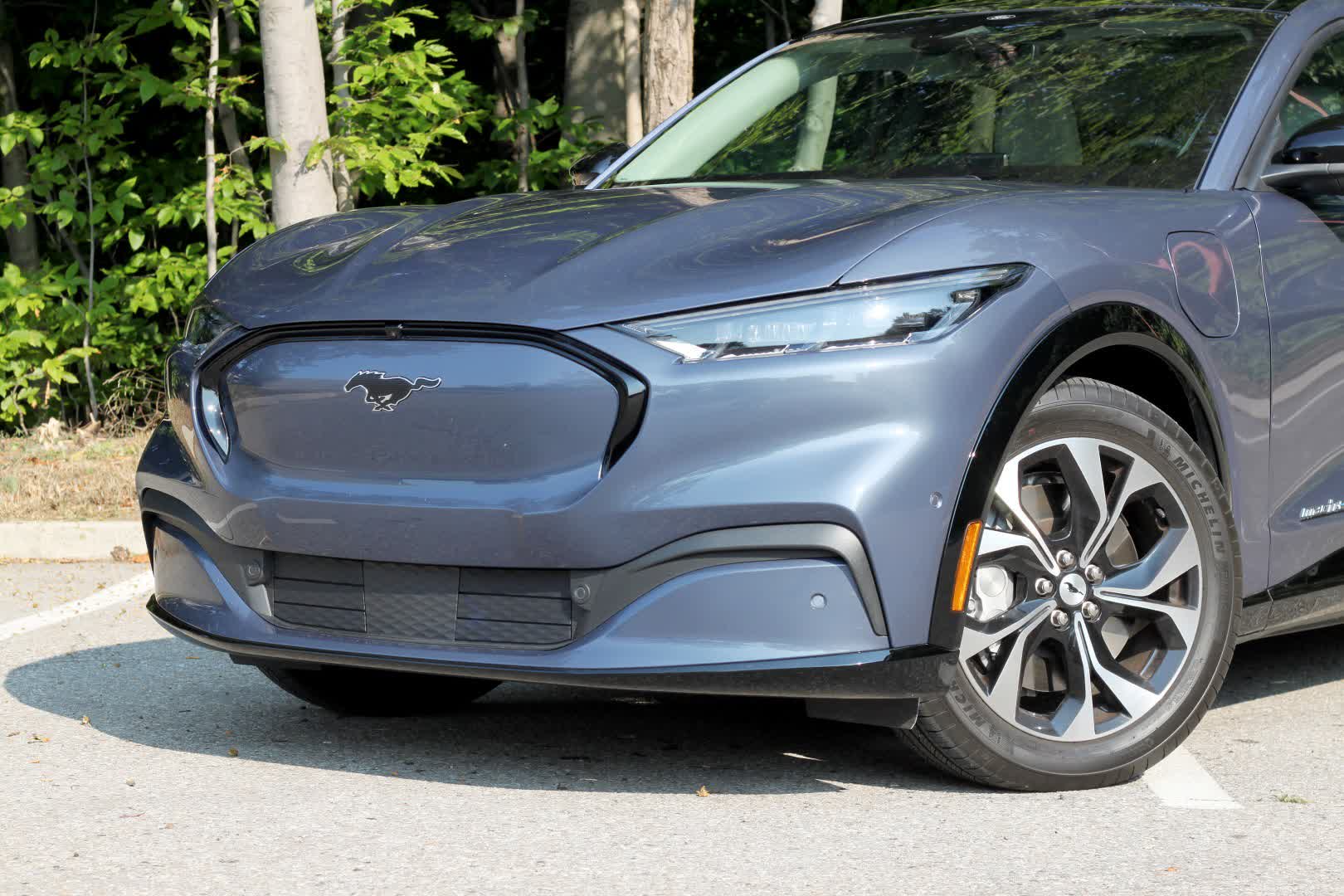
With its big battery, it should come as no surprise that the Mach-E is heavy. Depending on the configuration, it can weigh between 4,394 lbs and 4,890 lbs. This much weight can impact agility and handling.
For the average commuter, it will probably be fine and won’t be a bother. However, enthusiasts who hustle the vehicle down their favorite backroads will notice how SUV-like the Mach-E feels when braking. There’s also a one-pedal driving mode, which takes some getting used to.
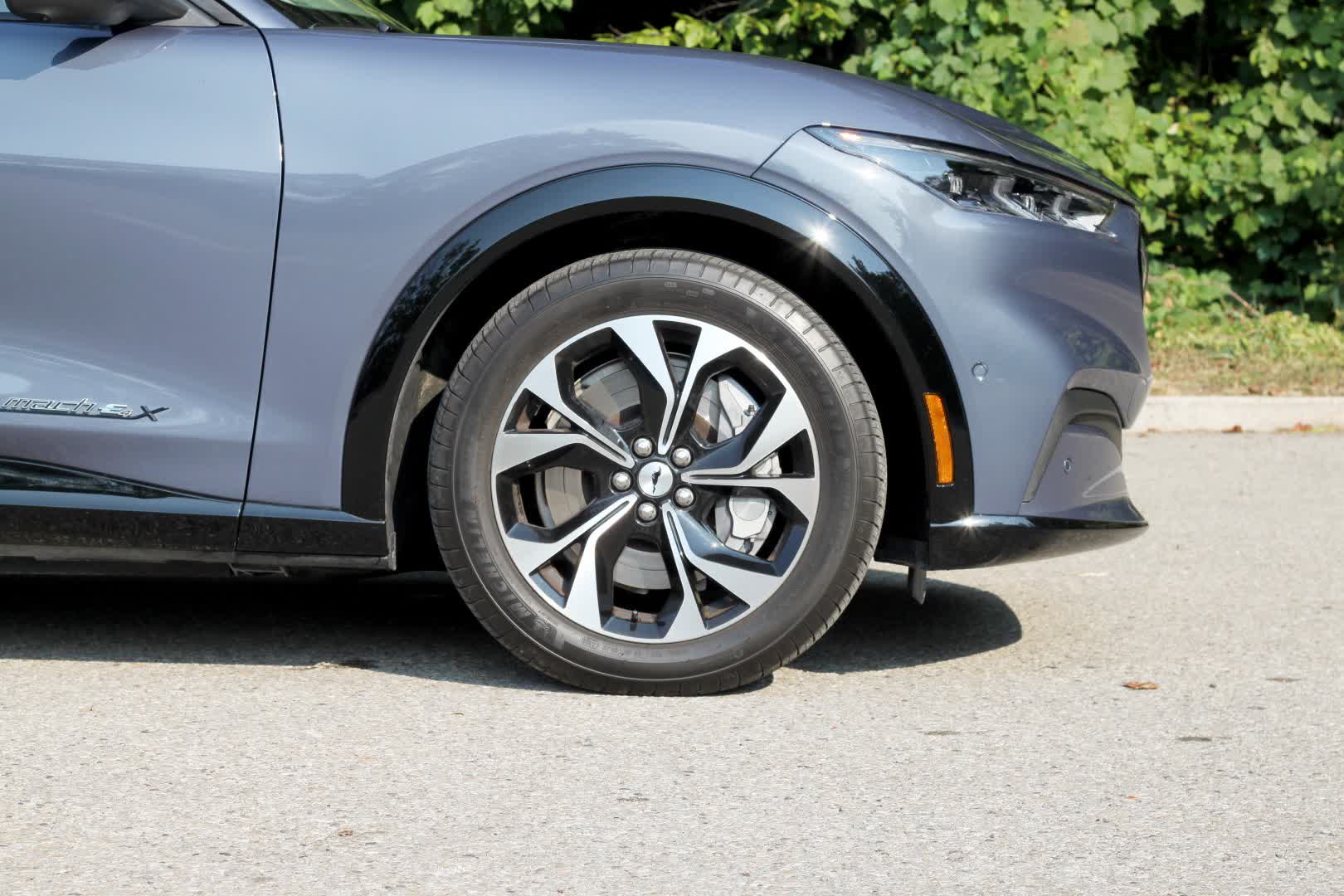
The battery pack is located within the floor between the front and rear axles, providing a low center of gravity and limiting the impact of the extra weight. Stickier tires would help, too, but would also impact range. Enthusiasts will notice the lack of feedback and engagement from the steering. Different drive modes can add more steering effort, making the handling feel a bit more involved.
When driving the Mustang Mach-E in traffic, the car keeps up with ease, can quickly fill gaps, and passes without much hesitation. In contrast to early EVs, it never feels as if it is lagging behind or holding up other cars.
What about recharging?
Eventually, the vehicle will need to recharge. This can be done very slowly with a 120-volt household outlet, replenishing about 3 miles per hour. This task will take nearly 90 hours for a complete recharge. Don’t do this unless it’s an emergency and there are no other options.
Most EV buyers will get a level 2 charger at home or will seek one out when on the go. Using one of these will speed things considerably. Expect this method to completely recharge a battery in 14 hours, though Ford also sells a 48-amp Connected Charge Station that will reduce that further down to just about 10 hours. This rate is about 30 miles of range per hour.
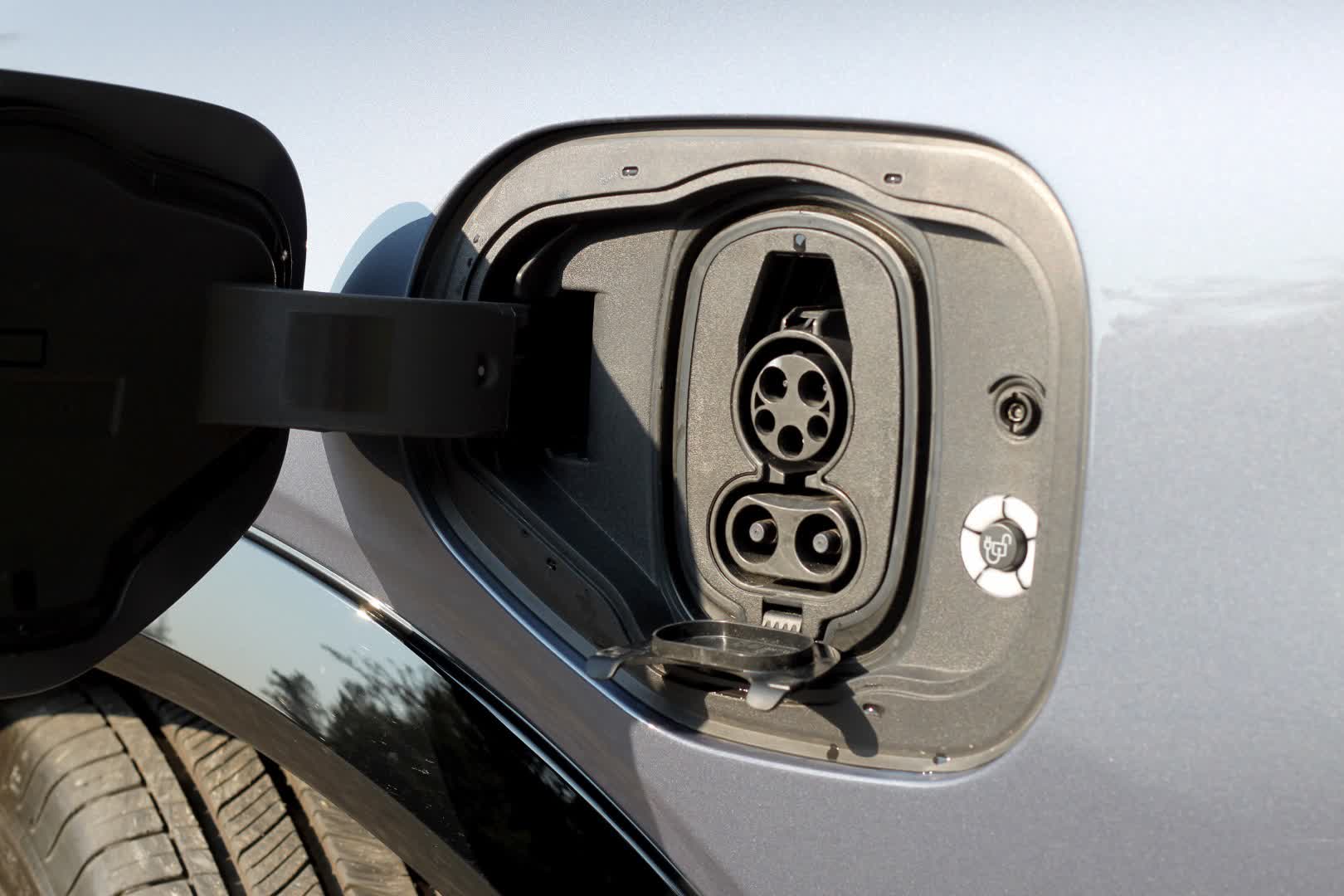
The impatient folks who want to recharge much faster also have an option.
The Mach-E supports DC Fast Charging, accepting charge rates up to 150 kW. Depending on the conditions, you can expect the car to recharge from 10 percent to 80 percent charge in 45 minutes.
This is what I saw using a 150 kW Electrify Canada station, and I also used 50 kW FLO chargers during my time with the Mach-E, which were a bit slower.
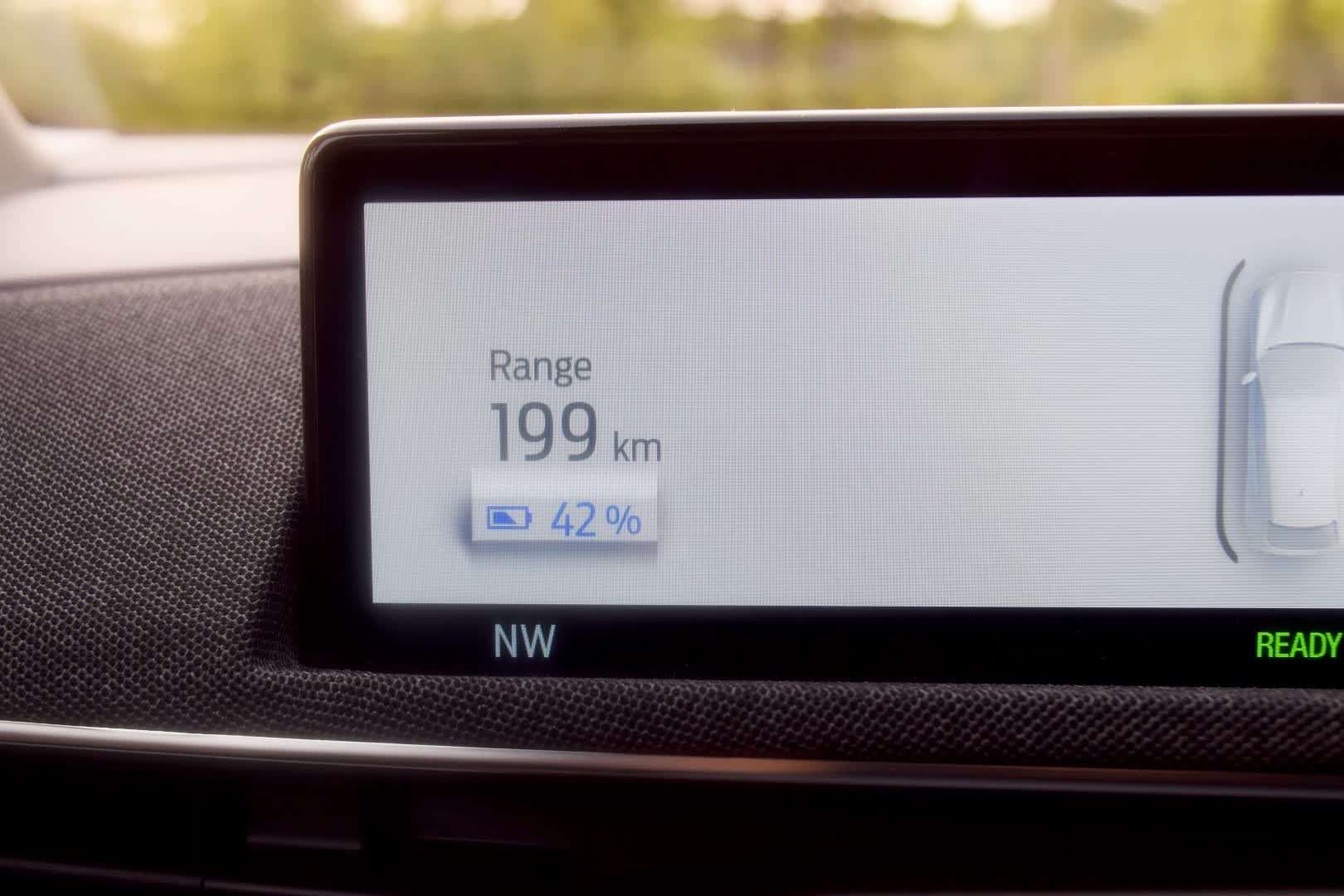
Those accustomed to the realities of EV charging know that fast charging an EV isn’t cheap. The FLO chargers near me cost about $20 an hour, and I used it for 37 minutes, recharging over 30 percent of the car’s range for $12.55. The Electrify Canada stations are a bit faster and more expensive. It costs $0.57 per minute on the 150 kW plugs, invoicing me $22 for 54 percent of the battery, which took about 30 minutes.
Additionally, EV newbies should know that the fast-charging charging experience changes dramatically once the battery hits 80 percent. Likely to preserve the lifespan of the battery, the charge rate plummets after the 80 percent mark. The Mach-E started charging at 12 kW instead of the 150 and 50 kW rates during the same session. For planning purposes, if you’re going to take a long road trip in an EV, consider memorizing the range of the vehicle at the 80 percent mark (it’s about 220 miles in the Mach-E).
How high-tech is it inside and out?
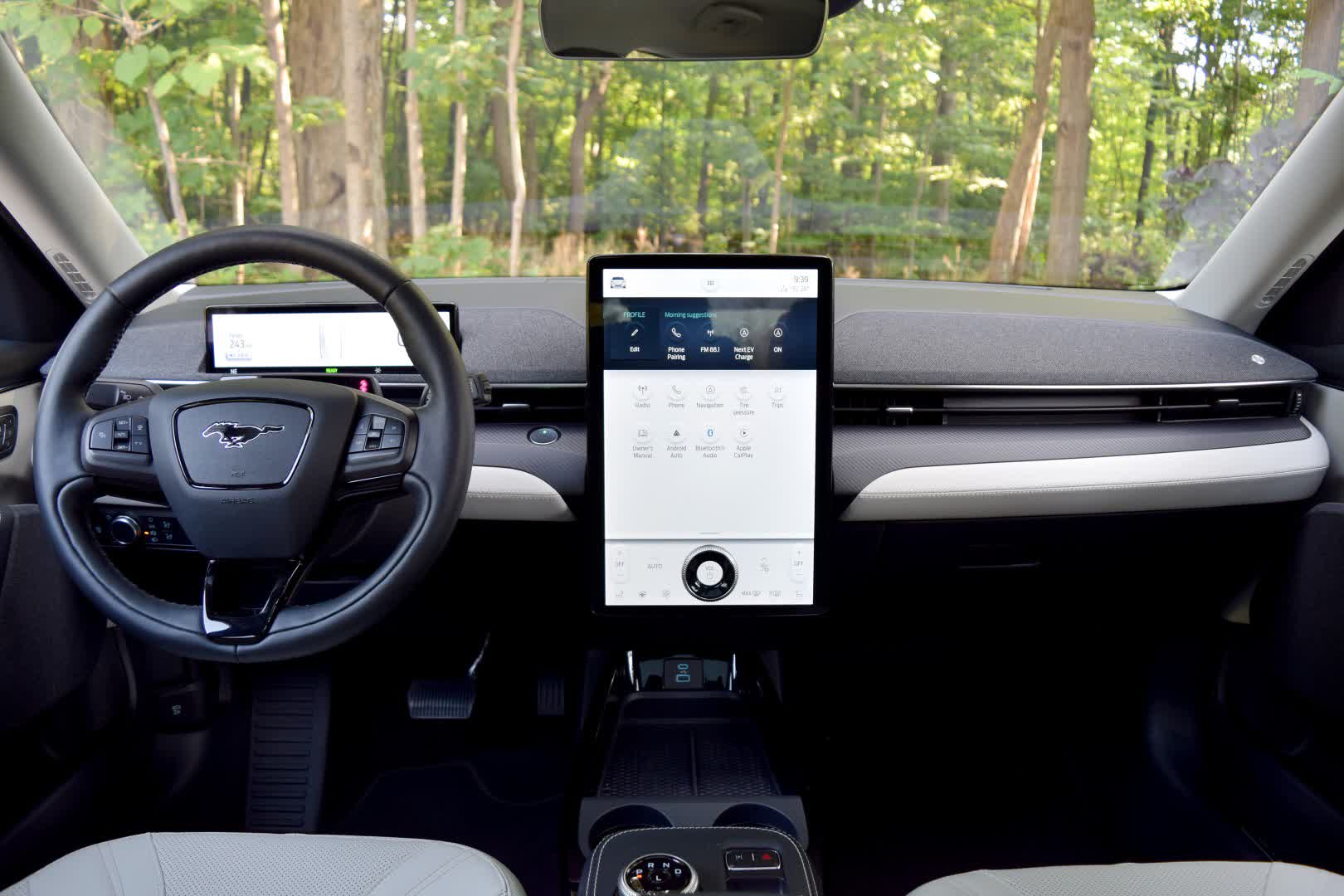
Ford follows the trends of other automakers, throwing great big screens in the middle of the dashboard. While it presents a minimalist dash with few physical controls, the operation of this screen while on the go is a frustrating affair.
Tapping on the screen to change items like climate settings requires taking your eyes off the road, and the animations and adjustments seem to take a bit too long to feel safe. Like a smartphone, the touchscreen interface has notification shades and drop-down menus, which can also feel distracting to navigate while driving. Perhaps the future Android Automotive OS system will be better, but that may alienate those who want less Google in their lives.
For a bit of familiarity, the vehicle supports Android Auto and Apple CarPlay, both of which can be initiated wirelessly, although there were a few times when the system wouldn’t automatically start those companion apps. The car also offers a wireless phone charger and a few USB ports (both USB-C and USB-A) for connectivity and charging.
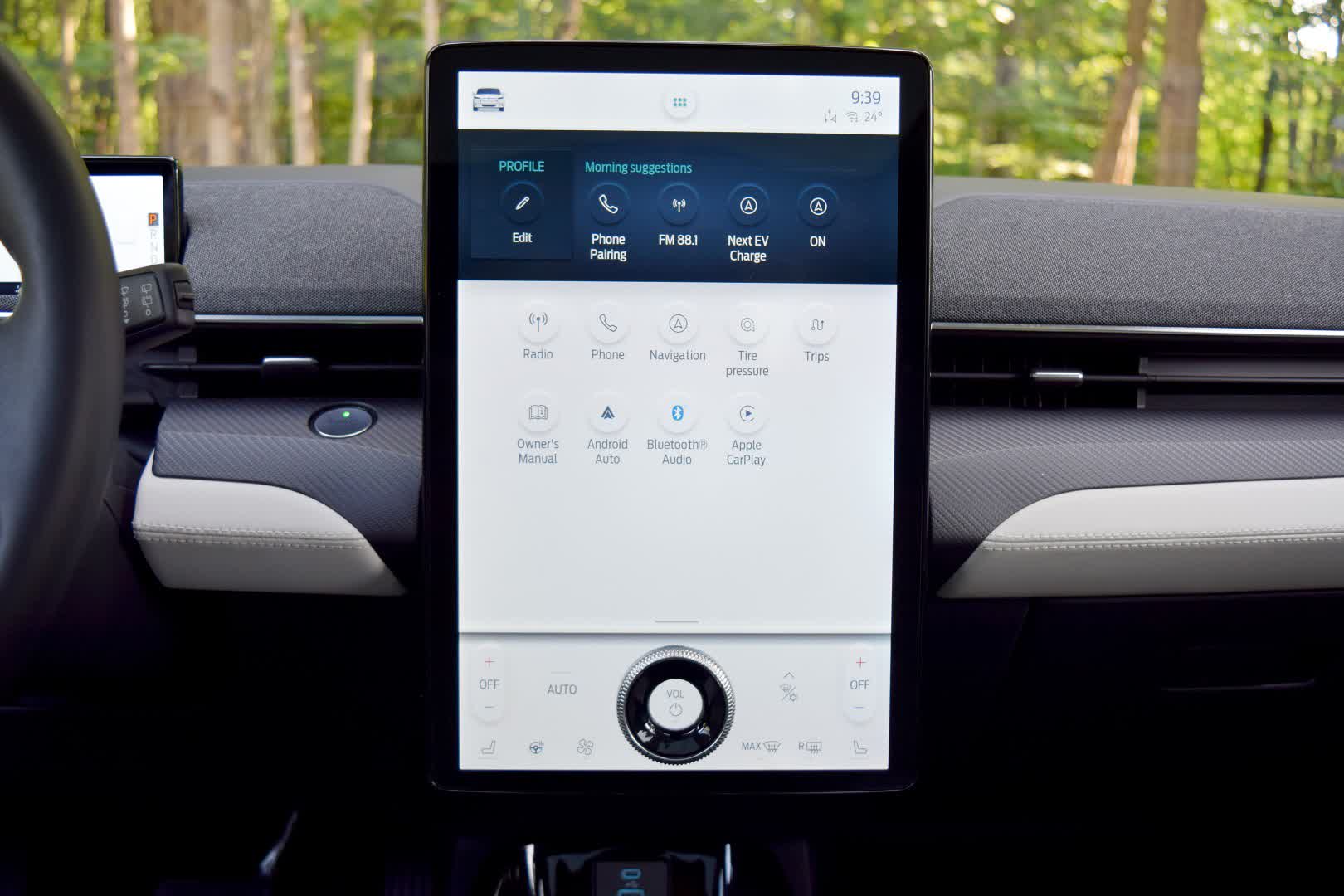
While the cabin features a mix of materials, only one area seems low-rent: the gauge cluster. This is another screen sticking out of the dash. It’s relatively small, isn’t customizable, and just gets the job done, which isn’t what you expect when you see a screen in that place. Usually, they’re full of fun and whimsy, are customizable, and pack a lot of useful information in one place. I’ve seen better displays in the Volkswagen Golf and Hyundai Elantra.
The vehicle can also be equipped with a bunch of safety tech and driver aids. There’s a useful 360-degree camera, (it also has a camera washer that spritzes dirt off the lens) and active park assistance, that will help park the car for you. Press a button and sidle up to where you want to park, and it’ll take it from there.
There’s a lot of branding for these safety features, so Ford Co-Pilot360 2.0, means the vehicle has automatic emergency braking for the front and rear, rear parking sensors, post-collision braking, blind-spot monitoring, lane-keeping assistance, and automatic high beam headlights.
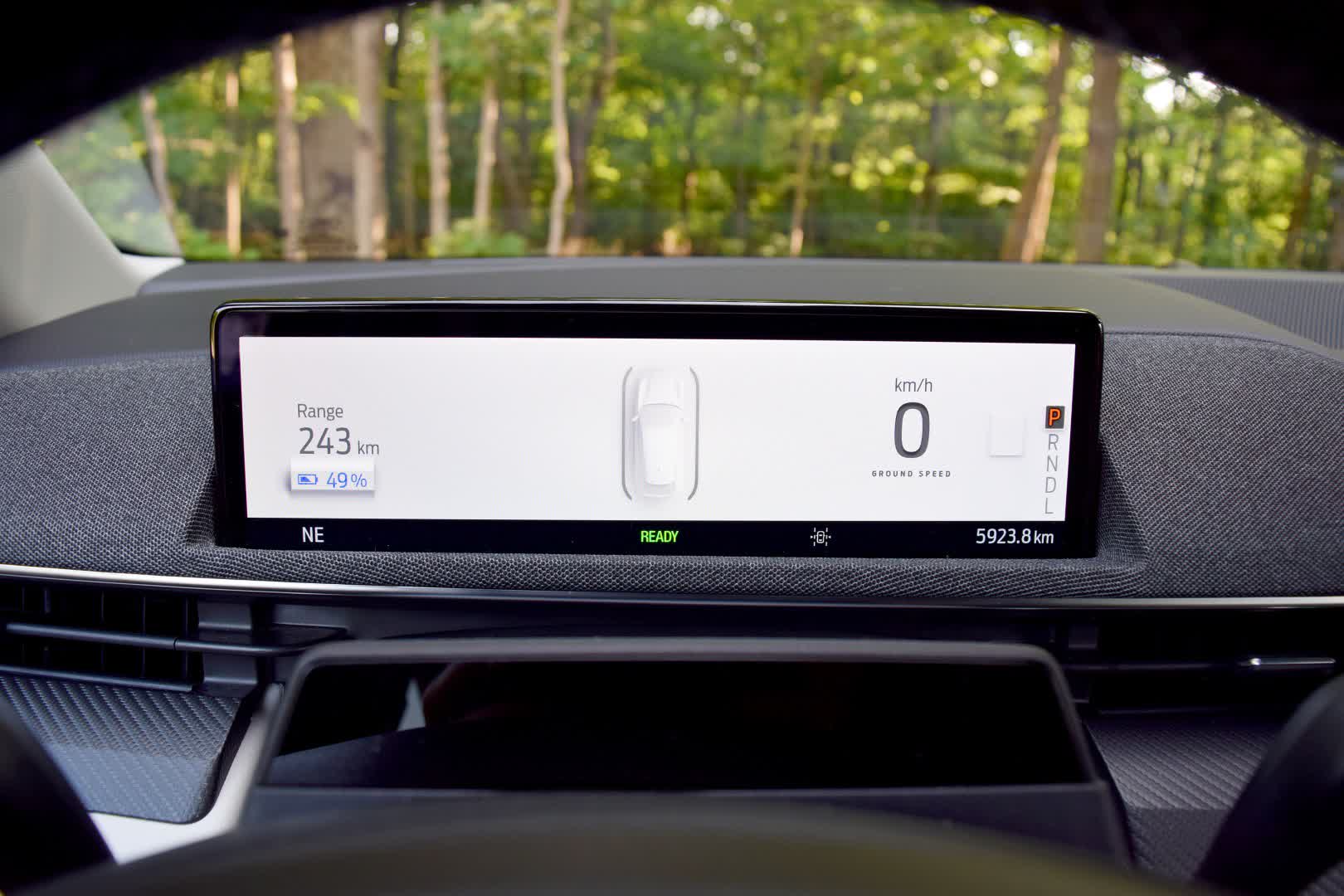
There’s also Ford Co-Pilot360 Assist 2.0, which includes adaptive cruise control with stop and go functionality, meaning it reacts to traffic and can bring the car to a stop and continue when the car ahead gets moving, lane centering, intersection assist (in case there’s a car coming that you can’t see), speed sign recognition (always handy when you can break the speed limit with a flex of your big toe), and voice-activated navigation, which is already available through Android Auto and CarPlay.
Eventually, all these features will come together in what Ford calls BlueCruise, a hands-free driving mode that uses highly detailed maps in addition to all the onboard sensors to make motoring as easy-going as possible. That feature will be added over the air and will cost $600.
The adaptive cruise control worried me a bit in dense traffic. The braking always felt a bit late and made me uneasy, and there was a moment when it seemed like the Mustang couldn’t detect a tailgate-mounted bike rack on the vehicle ahead.
And yes, you read that right – updates will be coming to this car over-the-air. Currently, the updates are vaguely described as bug-fixes, but there have been small changes to the infotainment interface, like improving the on-screen buttons for the trunk and frunk access. The vehicle also gained Amazon Alexa support through an OTA update.
Is it practical?
Since electric vehicles don’t have big combustion engines under the hood and lack drivelines, they can provide more space for passengers and cargo. Pop the trunk and you’re greeted with 29.7 cubic feet, or 840 liters of storage. Fold down the rear seats, and that expands to 59.7 cubic feet / 1,690 liters.

There’s also a modest front trunk (frunk) with 4.7 cubic feet of storage. Overall, it’s much more space than a typical family sedan, but less than most crossovers like the Honda CR-V or Toyota RAV4.
The Final Word
There’s a lot to like about Ford’s big-battery four-door. It has enough usable range, is spacious and fast. Charge times are pretty good, though lagging behind some of the German EVs that can charge at 350 kW instead of the Mustang’s peak of 150 kW. While the in-cabin tech is flashy, it’s not as useful as it could be. And I had to babysit the adaptive cruise control at times, which didn’t make the commute any less stressful.
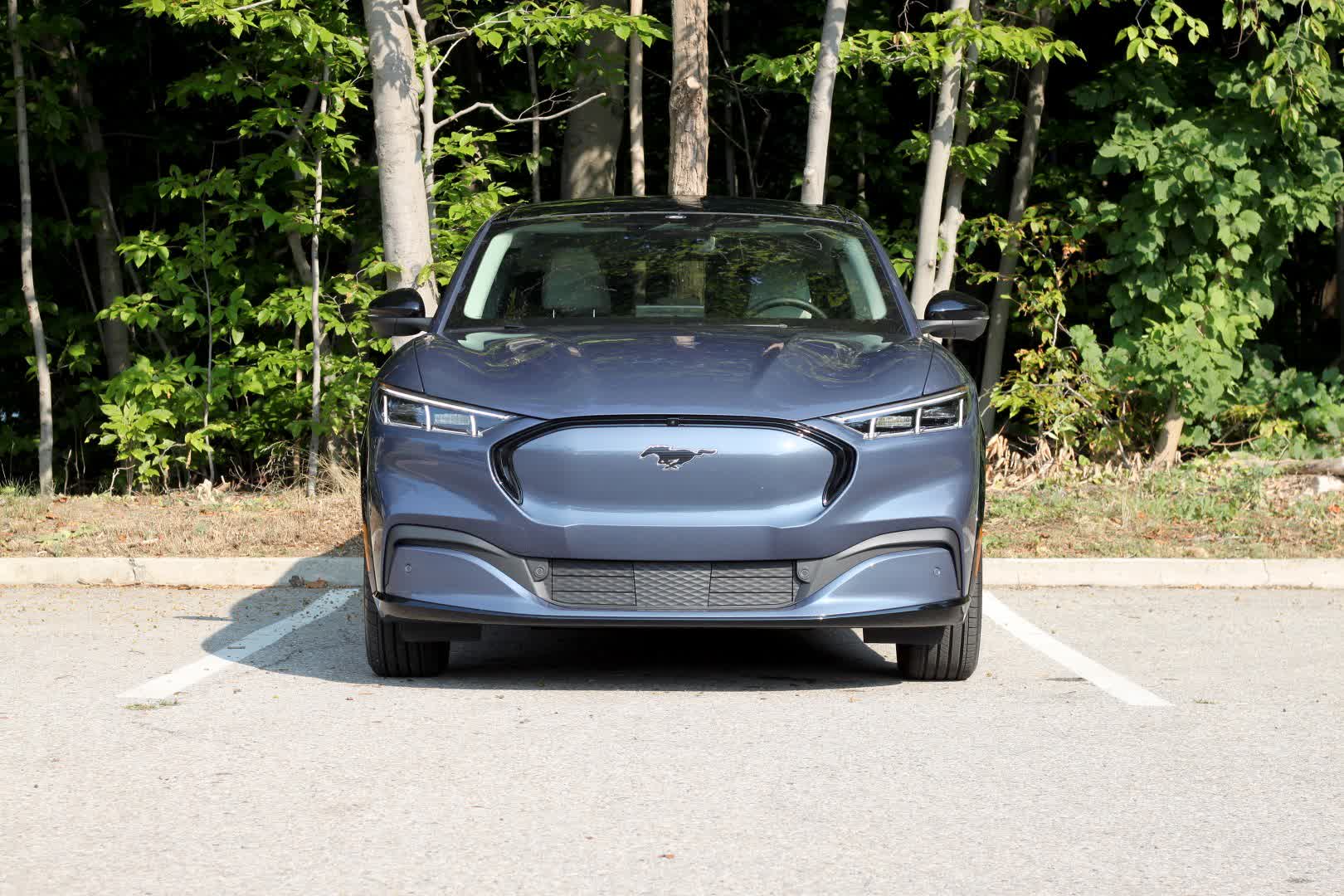
Overall it’s good enough and enjoyable, but still has room for improvement, which is expected for 2022 through to 2024, as engineers have already discussed how to boost the range and performance of the vehicle — likely by shedding weight and improving efficiency.
Fortunately for Ford, the Mach-E’s rivals are equally imperfect: the Tesla Model Y has a higher starting price at $46,990 and more range, though there are quality concerns with it, while the VW ID.4 has a lower starting price at $41,190, but with fewer configurations. More competition is looming, too, as the Hyundai IONIQ 5 and Kia EV6 are sure to make a splash when they finally arrive. For now though, the Mustang Mach-E feels like it belongs.

